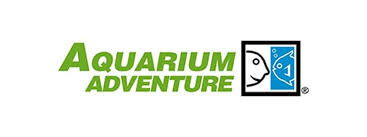Understanding Filtration - Part 2
TYPES OF FILTERS
There are many filtration options available to hobbyists and newer versions and methods are constantly being tested. Most filters combine all three types of filtration processes, mechanical, chemical, and biological.
IN THE AQUARIUM FILTERS
The biggest advantage of inside the aquarium filters is that water stays “in the aquarium”, so there is never a concern of water leaking out of the aquarium. The biggest disadvantage is they, “by design and being inside the aquarium”, are not very powerful so there is a limit on bio-load of fish in the aquarium.
Under Gravel Filters
Under gravel filters are one of the oldest forms of aquarium filtration but still very effective. It consists of a perforated or slotted plate or platform that sits directly on the aquarium bottom with a thick (2-4”) layer of gravel resting on top of it. One or more riser tubes come out of the back section of the plate and rise to the top of the tank. Water is “sucked” through these tubes and “dumped” back into the aquarium. This creates water movement or circulation through the bottom gravel bed, under the filter plate, up through the riser tubes and then back into the aquarium. Two methods of moving this water are used: An air stone at the bottom of the riser tube will blow bubbles that lift water with them on the way up the tube, or a water pump that sits on top of the tube, called a power head, draws water from the tube and expels it into the water column.
By passing oxygenated water over a thick gravel bed, we encourage beneficial bacteria to grow all over the gravel. Since a thick layer of gravel has a high surface area, enough bacteria grow as to biologically filter the water. For mechanical filtration, again, the gravel forms an effective stop for most particles in the aquarium. To perform chemical filtration, modules can be placed on top of the riser tube, so that water passes through the media, like carbon. One of the biggest drawbacks of under gravel filtration is simply due to the design of having large amounts of waste collect underneath the plate. Over a period of time, these large levels of waste will need to be removed from the gravel bed and under the filter plate, not because it is toxic but because it will slow down water movement and take away “attachment” sites for good bacteria.
Sponge Filters
Sponge filters are one of the simplest types of filters available. They have specific uses, and as such may not be suitable across a wide range of aquariums. Their operation consists of drawing water through a sponge with either an air supply or water pump. The sponge performs mechanical filtration, trapping particles in its pores, as well as biological filtration, due to the high porosity of the sponge.
The sponge filter has advantages in that the flow is low, reducing risk of damage to weak, small, or injured fish. This is why it is popular for use in quarantine, hospital, and fry-rearing tanks. The cost of the unit itself is quite low, and maintenance is simple to carry out. However, due to the limited size and lack of chemical filtration, its uses are limited to those types of tanks. Additionally, the size of the filter takes up a large amount of area, so it can be difficult to hide.
Internal Power Filters
Inside the tank (internal) filters perform a similar function as under gravel filters only with a different design and mode of operation. These filters draw water through a casing or filter area that contains filtration media, in the form of cotton or synthetic floss, carbon packets, and sponges. These different media perform the mechanical, chemical, and biological filtration and the water is returned back into the aquarium. The one drawback on these filters is that they take up viable fish living space in the aquarium.
Internal power filters can however, be a useful alternative format of filtration, especially when the level of water is below the rim of the tank. Most other filters require that the water level be at the top of the tank to operate, but the internal filter is contained completely below the water, so it can be used if the tank is half full.
